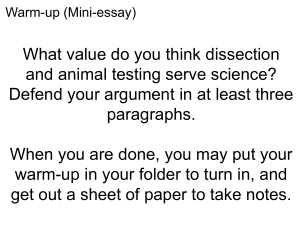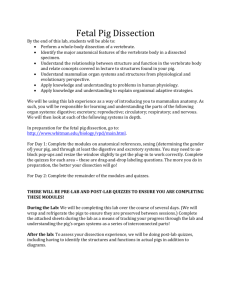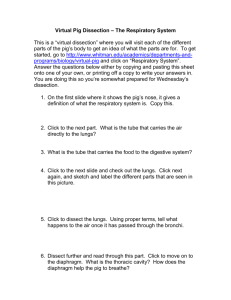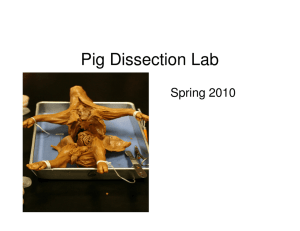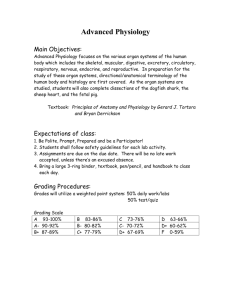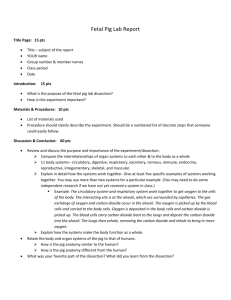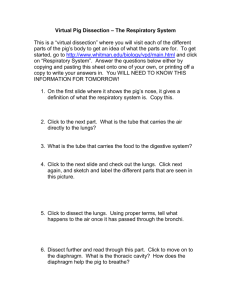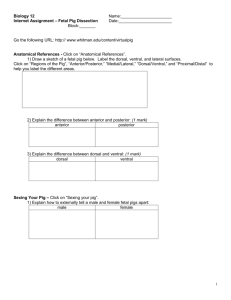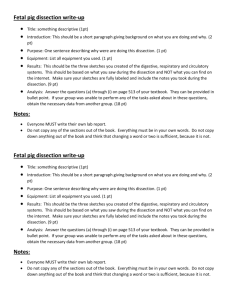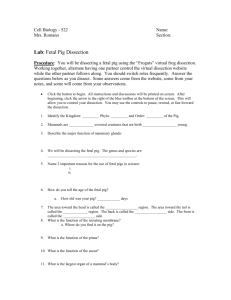Fetal Pig Dissection Lab Requirements
advertisement
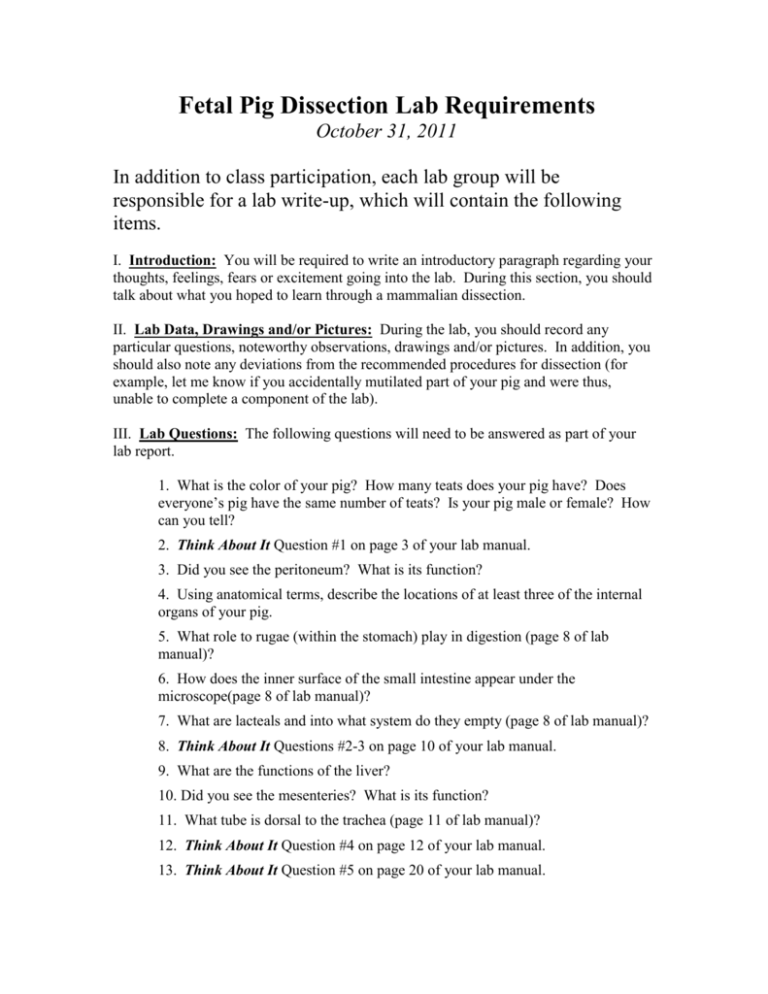
Fetal Pig Dissection Lab Requirements October 31, 2011 In addition to class participation, each lab group will be responsible for a lab write-up, which will contain the following items. I. Introduction: You will be required to write an introductory paragraph regarding your thoughts, feelings, fears or excitement going into the lab. During this section, you should talk about what you hoped to learn through a mammalian dissection. II. Lab Data, Drawings and/or Pictures: During the lab, you should record any particular questions, noteworthy observations, drawings and/or pictures. In addition, you should also note any deviations from the recommended procedures for dissection (for example, let me know if you accidentally mutilated part of your pig and were thus, unable to complete a component of the lab). III. Lab Questions: The following questions will need to be answered as part of your lab report. 1. What is the color of your pig? How many teats does your pig have? Does everyone’s pig have the same number of teats? Is your pig male or female? How can you tell? 2. Think About It Question #1 on page 3 of your lab manual. 3. Did you see the peritoneum? What is its function? 4. Using anatomical terms, describe the locations of at least three of the internal organs of your pig. 5. What role to rugae (within the stomach) play in digestion (page 8 of lab manual)? 6. How does the inner surface of the small intestine appear under the microscope(page 8 of lab manual)? 7. What are lacteals and into what system do they empty (page 8 of lab manual)? 8. Think About It Questions #2-3 on page 10 of your lab manual. 9. What are the functions of the liver? 10. Did you see the mesenteries? What is its function? 11. What tube is dorsal to the trachea (page 11 of lab manual)? 12. Think About It Question #4 on page 12 of your lab manual. 13. Think About It Question #5 on page 20 of your lab manual. 14. The female reproductive system has many safeguards against infection. Why such safeguards especially important in humans (page 22-23 of your lab manual)? 15. Think About It Questions #6-7 on page 24 of your lab manual. 16. What makes an organ a retroperitoneal organ? Which retroperitoneal organs were you able to identify during the dissection? IV: Conclusion: The final paragraph of your report should include your overall thoughts about the dissection experience. Was it worth your time and effort? What did you learn from this hands-on experience? What shocked you the most about the dissection? Did you learn anything about yourself (like you were more/less squeamish than you originally thought, etc….). Was it fun? This lab report is intended to provide groups with some latitude with regard to presentation style. Each lab partner must write their own introductory and conclusion paragraphs, but the lab data, drawings, pictures and questions may be turned is as a group. LAB IS DUE ON MONDAY, NOVEMBER 7th 2011!
